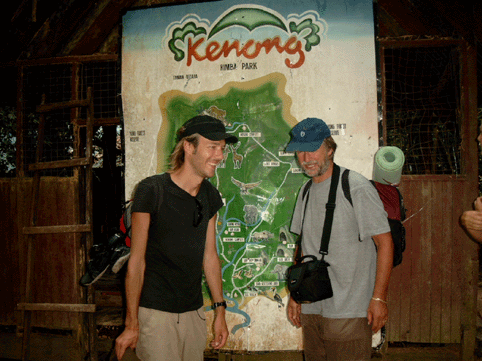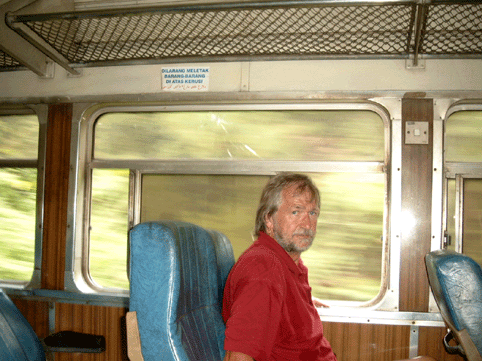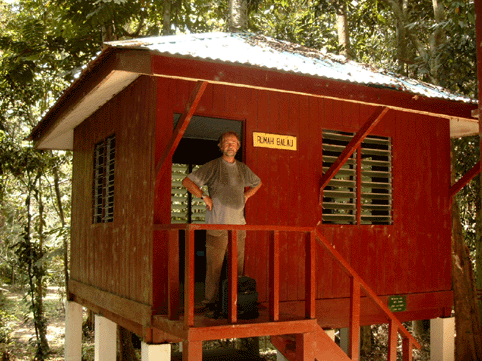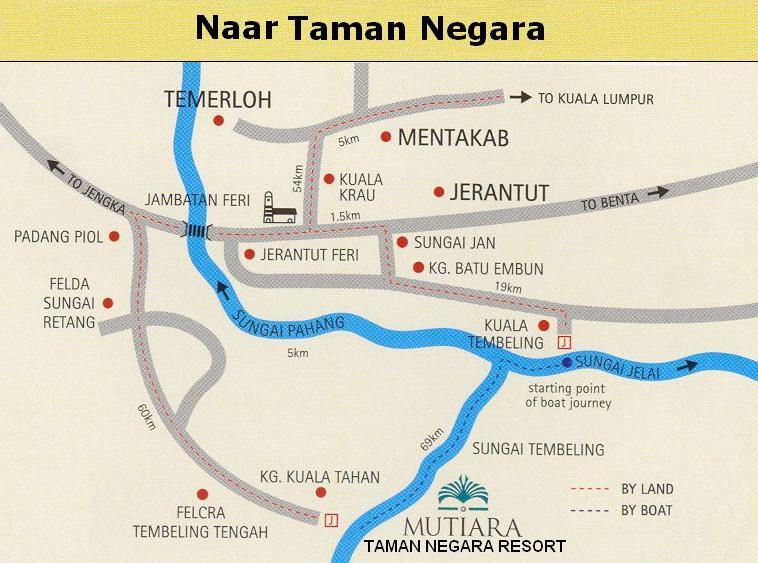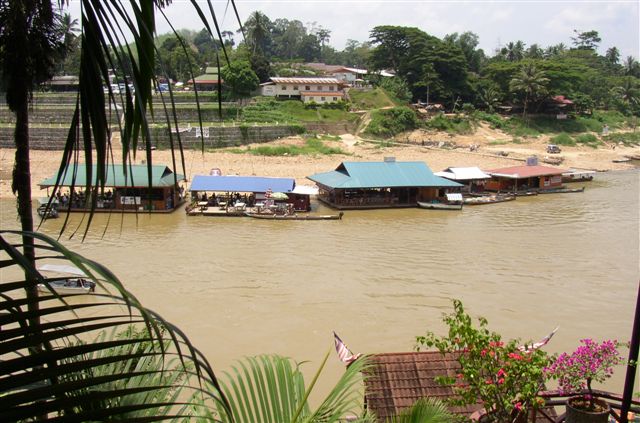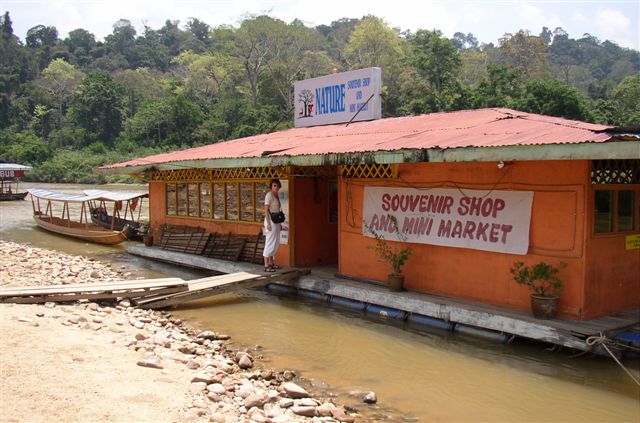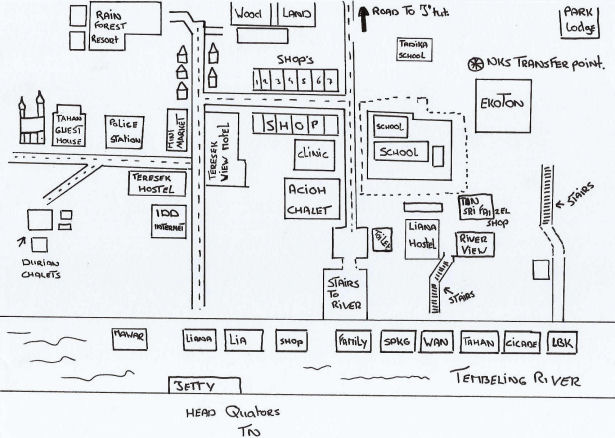Introduction The lake, with the mountain of Gunung Chini
in the background.

Tucked away in a quiet corner of the Malaysian state of Pahang lies the legendary lake of Tasik Chini. The ancient legends of this enchanting lake involve tales of sorcery and dragons, but the modern saga of this wetland is one of ecological mismanagement and the near collapse of a delicate ecosystem. Hopefully, it looks like the story may have a happy ending.
Myths and LegendsLocal legend tells a tale of a wandering group of Jakun tribesmen who cleared the land to grow food crops. During their labour, an old woman appeared who proclaimed that she was the rightful owner of the land and that her permission should have been sought before any trees were felled. The Jakun humbly apologised, whereupon the woman allowed the men to continue their work. Before departing, however, she planted her walking stick in the ground as a mark of her ownership, telling the men never to remove it.
Beautiful sunsets are common.

The men continued with their work, but some time later they heard one of their dogs barking and snarling at a decaying log. One of the Jakun threw his stick at the log, but immediately a torrent of blood issued from the log causing the man to run back to his friends in fear. His friends thought he was possessed by demons and tried to keep away from him. However, the barking continued so the entire tribe returned to investigate the log. A spreading pool of blood had formed around the log.
In fear they hurled their own sticks at the sight, whereupon a dark cloud gathered in the sky. The thunder roared, the lightning flashed and a torrent of rain fell from the sky. The men grabbed their belongings and ran for cover, but in the chaos one of them pulled the old woman's stick from the ground - the very stick which they had been warned not to touch. Immediately a fountain of water poured from the hole made by the stick. The water flowed for many years, thereby creating the lake of Tasik Chini. The tribe realised then that the log was actually the dragon called Naga Seri Gumum.
Of course, no magical lake would be complete without stories of a resident monster or a long-lost, sunken city. So, Tasik Chini has both ! Much like the famous Loch Ness, a serpent-like monster is reputed to make the lake its home. More seriously, there are theories that an ancient Khmer city once existed in the vicinity which has prompted archaeological studies of the lake and its surrounds.
The Sacred LotusFlower and receptacle of the Sacred Lotus Nelumbo nucifera

In reality, Tasik Chini is less a lake and more a naturally dammed tributary of the mighty Pahang River, which lies to the north. Until recently the lake's waters rose and fell with the seasons - during the rainy season the waters were unable to flow down the narrow Sungai Chini and so became backed up in a series of lakes. A unique ecosystem developed, dominated by the presence of the Sacred Lotus Nelumbo nucifera which once covered the entire surface of the lake system.
During low waters the lotus seeds would germinate, the roots would take hold in the soft mud and the stunning blooms would appear on the water's surface. During monsoonal floods, from October to January the lotus would die back but, the flowers having been fertlised, new seeds would litter the lake bottom awaiting the dry season.

This lotus receptacle contains 31 edible seed-like fruits
Foolishly, in 1995 the State Government Of Pahang, in a bid to make the lakes more appealing to visitors in the dry season, built a dam at the point where the Sungai Chini enters the Pahang River. The waters were then never able to recede again. It wasn't long before the ecosystem started showing signs of stress.
The lotuses became fewer and fewer with the passing years, and large stands of various species of Eugenia trees which border the lake also died back, being unable to tolerate constant submergence. Happily, the mistake has been rectified; in early 2000 the dam was breached and redesigned to accommodate the annual rise and fall of the waters. The lotuses are returning once again, however it will be decades before the damage to the Eugenia is healed.
Local Wildlife Dieback of Eugenia sp - due to
lake level mismanagement

The lake area comprises over 200 hectares of open water, and 700 hectares of freshwater swamp and swamp forest. In addition to the abundant lotuses, thickets of Pandanus helicopus or Rasau are common towards the margins, along with occasional water lilies. Encounters with turtles are common including the Malayan Soft Shelled Turtle Amyda cartilaginea and Spiny Terrapin Heosemys spinosa.
The surrounding forests are also rich in wildlife. In the dipterocarp forest primates such as the Banded Langur Presbytis melalophos, the handsome White-handed Gibbon Hylobates Lar, the ubiquitous Long-tailed Macaque Macaca fascicularis and the Pig-tailed Macaque Macaca nemestrina may be encountered. The latter species is a common pet of the Jakun people, who still eke a living from the lake and its surroundings. The status of larger mammals in the area, such as Elephant, Tiger and Tapir is unclear.
 The Pig-tailed Macaque
The Pig-tailed Macaque
Macaca nemestrina - commonly kept as pets by the Jakun people. Curiously the lake does not seem so attractive to bird life, however common forest-edge species such as bulbuls, orioles and bee-eaters are present, and various kingfishers may be seen, including the uncommon Blue-eared Kingfisher Alcedo meninting. Overhead the rare Grey-headed Fish Eagle Ichthyophaga ichthyaetus still circles.
The lake also serves as an important breeding ground for fish species which upon reaching adulthood then populate the Pahang River. Their migration is now largely unimpeded by the previously dammed mouth of the Sungai Chini.
Information : Visitor facilities : Most visitors will stay at the lakeside Rimba Resort (formerly Lake Chini Resort). The resort has ten standard chalets with ceiling fan, dormitory rooms and a campsite. The rooms are simple but adequate, but some are in need of renovation. The resort has an open-air restaurant looking over the lake - try some of the local freshwater fish dishes. Boat hire and taxi / van transfer are available from the resort.


























